How to Check RAM CAS Latency
Outline
What is CAS Latency (CL) Ratio?
We often judge a RAM’s performance based on the clock frequency. So, if we have two different RAM sticks that have clock frequencies of 2133Mhz and 2400Mhz respectively, then we think of the 2400MHz RAM to be faster.
However, the clock frequency is only the theoretical limit of a RAM’s performance. There are several other factors like CAS latency, for instance, that affects a RAM’s performance.
CAS Latency is the time delay between a data request and data delivery by the RAM. In short, it is a measure of how quickly the RAM serves up the requested data. CAS Latency is measured in clock cycles.
How to Check RAM CAS Latency?
So, how will you determine your RAM stick’s CAS Latency? It may not be written directly on your RAM. Instead, it might be mentioned within a series of numbers that are printed on your RAM. Each number in the series signifies some timing value and things might start to get confusing at this point.
You can try any of the 4 methods listed below to find the CAS Latency of your RAM without any hassles or potential mistakes.
Method 1: via CPU-Z
By far the easiest method is to install a freeware called CPU-Z. It is a very popular tool that provides all kinds of useful information about your computer’s hardware including the CAS Latency speed of the RAM. You can go through the following steps to know the CAS Latency of your RAM:
Step 1: Get the installer for CPU-Z and install it once the download completes. You can refer to the official CPU-Z site for installation.
Step 2: Once installation is over, launch CPU-Z and navigate to the memory tab.
Step 3: CAS Latency should be mentioned in the Timing box along with other timing information. The number that you read here should be in clock cycles.
Step 4: Next, you can head over to the SPD or Special Presence Detect tab to switch between installed memories on your computer. You can view timing information by selecting a particular memory from the drop-down list.
You can view timing information by selecting a particular memory from the drop-down list.
How to Find the Clock Speed of RAM?
You can also get the clock frequency of the RAM from the memory tab. If you want to know the clock frequencies of all your installed modules, then head over to the SPD tab and go through each and every module. The timing area will have information about clock speed.
Method 2: via Piriform Speccy
Piriform Speccy is another great freeware tool that serves details about your computer’s hardware. To know the CAS Latency of the memory modules on your computer, follow the below-mentioned steps:
Step 1: Download Piriform Speccy from its official site. You can download the free version for this purpose.
Step 2: Launch the application.
Step 3: Go to the RAM section on the UI of the app.
Step 4: You should find the CAS latency of your RAM in this section. It is usually shown in clocks.
It is usually shown in clocks.
Step 5: Piriform Speccy has an SPD or Special Presence Detect functionality using which you can browse through the specs of all your installed memory modules. Simply expand the subsection named SPD.
Step 6: The JEDEC#7 in the Timing table is what indicates the maximum CAS Latency.
Method 3: via Command Prompt
If you don’t want to install third-party apps to know the CAS Latency, then you can also use Windows’ inbuilt tools. You can find out about the part number of your memory module and then use it to search for its specs online or on the manufacturer’s website. Follow the steps given below to check the part number using the command prompt:
Step 1: Start command prompt from the start menu and select run as Administrator.
Step 2: In the command prompt, you can type the following command: wmic memorychip get devicelocator, partnumber and press Enter.
Step 3: You will be provided with a list of all the memory modules that are installed along with their part numbers. Use the required part number and search it on google to reveal the CAS Latency spec.
Use the required part number and search it on google to reveal the CAS Latency spec.
Method 4: via Physically Examine RAM Modules
The part number of a memory module is usually printed on its body. You can search for this part number to know more about the CAS Latency of this RAM. Alternatively, sometimes, RAM timings may also be printed. It can look somewhat like this – CL15-18-18-36. The numbers that follow the letters ‘CL’ is the CAS Latency measured in clocks.
This method may not be possible in some cases like for Laptops or AIO computers.
Is a Higher or Lower CAS Latency Better?
CAS Latency definitely affects performance. The lower the number, the lower the latency and, hence, the better the performance. The RAM having a lower CAS Latency number will perform better. Of course, this is assuming that all other parameters remain the same including clock frequencies.
The CAS Latency number of your RAM is merely the number of clock cycles it takes for it to serve data after a request is made. This number needs to be multiplied with the duration of one clock cycle to get the delay in units of seconds.
This number needs to be multiplied with the duration of one clock cycle to get the delay in units of seconds.
Obviously, the lower the CAS Latency (CL) Ratio, the faster the RAM. But, it also depends on the duration of the clock cycle for the RAM.
Can you Mix CAS Latency RAM?
Sure. You can mix RAMs having different CAS Latencies. However, the motherboard will force the RAM with the lower CL to match the CL of the slower counterpart. Hence, you will only get the performance of the slower memory.
What is a Good CAS Latency for RAM?
CAS Latency provides incomplete data. The clock frequency is what determines the duration of one clock cycle and hence it is required to actually calculate the latency time in seconds (nano seconds to be precise). Therefore, judging a RAM on CAS Frequency alone is incorrect.
Why CAS Latency Matters for RAM?
When comparing two RAM sticks having the same capacity and clock speed, you should consider the CAS Latency to determine which one is superior. The one with the lower CL will outperform the other one due to lower latency.
The one with the lower CL will outperform the other one due to lower latency.
Conclusion
CAS frequency only holds partial information. Therefore, it should always be considered along with the clock frequency. This is because it entirely depends on the duration of one clock cycle. Also, while mixing two or more RAM modules, you should consider the CL ratio along with other factors. This is because installing a RAM with a higher CL can slow down your system.
Guide to RAM (Memory) Latency
Although it’s arguably one of the most straightforward components to install, understanding what makes your RAM tick is a whole other ballgame.
Those innocent-looking sticks of memory are far more complex than they seem. So let’s try to simplify one aspect today, shall we?
Memory Latency.
We’ll go over what it means, how it could affect your workloads, and help you understand whether you should chase after those blazing-fast speeds or look for low latency memory kits.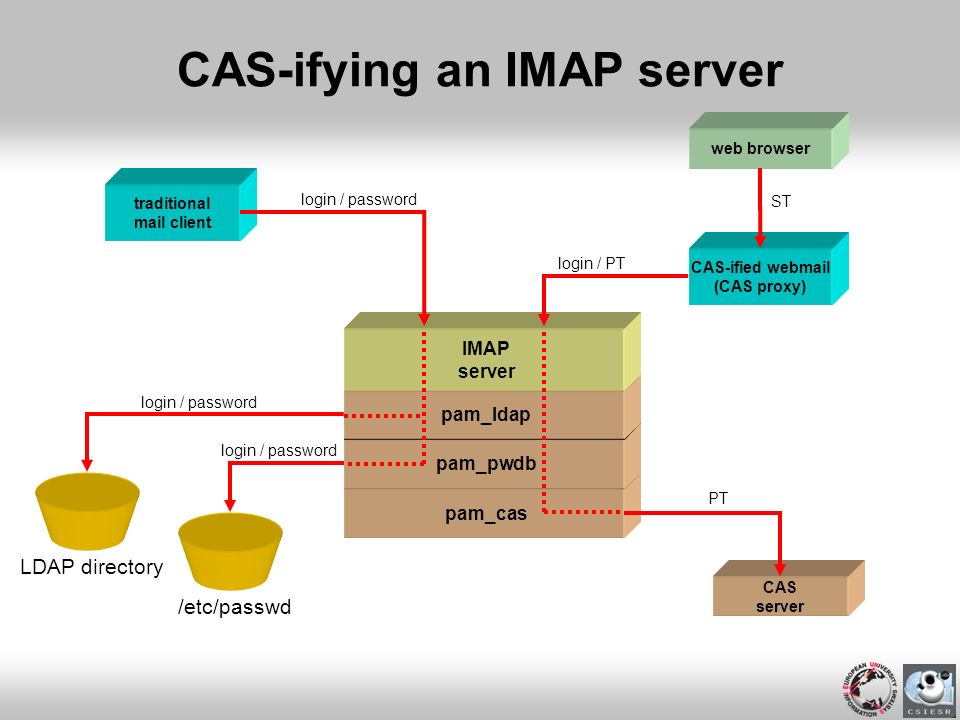
RAM Speed vs. Latency
While memory speed (or data rate) addresses how fast your memory controller can access or write data to memory, RAM latency focuses on how soon it can start the process.
The former is measured in MT/s (Megatransfers per second) and the latter in nanoseconds.
Before we dive into calculating memory or RAM latency, there are a few terms you should know:
Latency
Simply put, latency is a delay.
This delay can be measured in nanoseconds (real-world time).
However, when it comes to digital electronics, we often use clock cycles because this way we get comparative numbers that aren’t dependent on frequency or data rate of a part.
Memory Timings
Unlike latency, memory timings (that sequence of numbers you see on your memory module) are measured in clock cycles.
So, each number in memory timings, like 16-19-19-39, indicates the number of clock ‘ticks’ or cycles it takes to complete a certain task.
Here’s a short overview of what those timings mean, from first to last (all measured in clock cycles).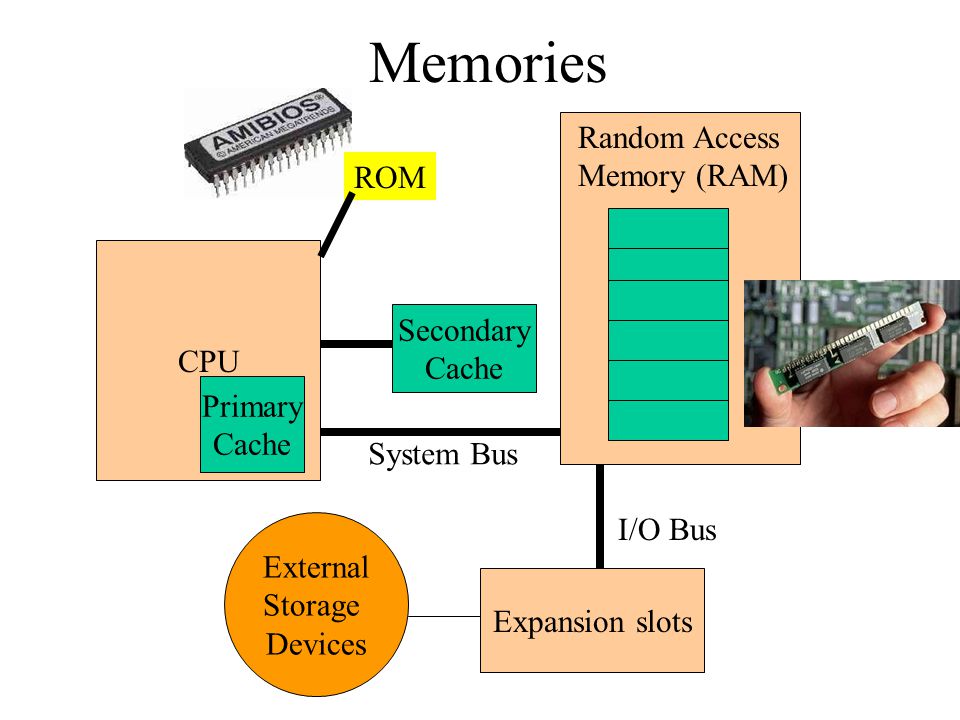
To simplify things, imagine your memory space as a giant spreadsheet with rows and columns, where each cell can hold binary data (0 or 1).
- CAS Latency (tCL) – The first memory timing is something called Column Access Strobe (CAS) Latency. Although the term strobe is a bit antiquated today as it’s a vestige from the Asynchronous DRAM days, the term CAS is still used in the industry. CAS Latency of RAM indicates the number of cycles it takes to get a response from memory once the memory controller sends over a column it needs to access (think about that spreadsheet analogy I mentioned above). Unlike all other timings below, tCL is an exact number and not a maximum/minimum.
- Row Address to Column Address Delay (tRCD) – The second number denotes the minimum number of clock cycles it will take to open a row (again, on that giant spreadsheet) and access the required column. Remember, unlike tCL, tRCD isn’t an exact number but is the maximum delay.
- Row Precharge Time (tRP) – The third number in that 4-number sequence indicates the minimum clock cycle delay to access another row within the same selected column.

- Row Active Time (tRAS) – The last number in that memory timing sequence denotes the minimum number of clock cycles a row needs to remain open to access the data. This is usually the biggest delay.
Calculating RAM Latency or CAS Latency
Simply put, CAS Latency is the amount of time your memory takes to respond to a request from the memory controller. Here’s a chart that simplifies the process for you:
RAM Latency Table
In this section, we’ll find out how to calculate your RAM latency.
Of course, you could also use a RAM Latency calculator if you want to skip the math.
However, because advertised CAS Latency is measured in clock cycles, we need to account for memory speed to get a real-world CAS latency in nanoseconds.
Here’s the formula that you use:
CAS latency formula
So, say we have a DDR4-3200 CL16 memory kit.
You get a latency in nanoseconds with (16*2000)/3200 = 10ns.
First Word Latency
Now, if you’re wondering – what about those other memory timings? Don’t those affect latency as well?
Yes, they do.
However, CAS Latency is still the most commonly used metric to compare memory latency because it more directly affects (immediately) how fast your RAM module responds to a request.
That said, some engineers do argue the benefits of relying instead on First Word latency when it comes to memory.
In simple terms, First Word Latency accounts for primary memory timing numbers along with the Burst Length to come up with a delay that in essence tells you how long it takes to read a word out from memory.
Low Latency RAM vs. High-Speed RAM?
What’s faster?
Consider the following three kits –
- 32GB (2×16) DDR4-3200 CL16
- 32GB (2×16) DDR4-3600 CL18
- 32GB (2×16) DDR4-4000 CL20
Which one do you think is the ‘fastest’?
Well, that’s where things become a bit complicated (or interesting, if you’re a weirdo like me).
For 3D Viewports and Active Workloads
We tested this out ourselves. And it turns out that the task itself is so severely bottlenecked by the IPC and clock speed of a single processor core, that it doesn’t matter what latency you pick as long as the memory data rate or timings don’t actively hamper the processor’s speed.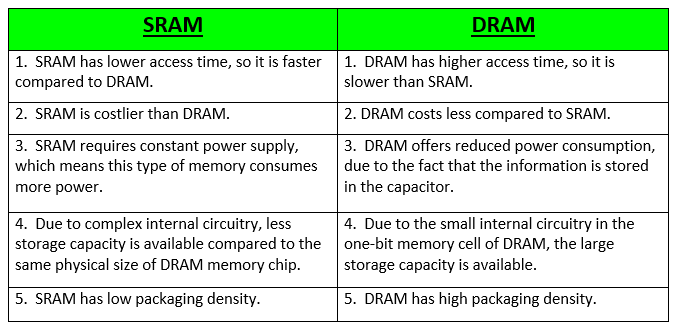
| CPU: Ryzen 9 5950X | CGDirector Viewport Benchmark (10-run Average) |
|---|---|
| DDR4-3600 CL20 | 1230.75 |
| DDR4-3600 CL16 | 1237.50 |
| DDR4-2666 CL20 | 1230.88 |
So, as an example – with Ryzen CPUs, both looser timings and lower data rates affect the performance of the CPU itself (even single core).
However, this opens up an interesting discussion.
Should you grab a cheaper DDR4-2666 CL20 kit (or a DDR4-2666 CL16 kit) instead of a slightly pricier DDR4-3600 CL20 kit if you’re going to end up with similar performance?
I’d say no. You’ll see better performance with a faster memory kit for any task that places an active load squarely on the CPU, spread across multiple cores.
One example of this is scrolling across quickly across a Premiere Pro timeline with compressed source footage.
For CPU/GPU Rendering Workloads
Short answer – doesn’t matter too much.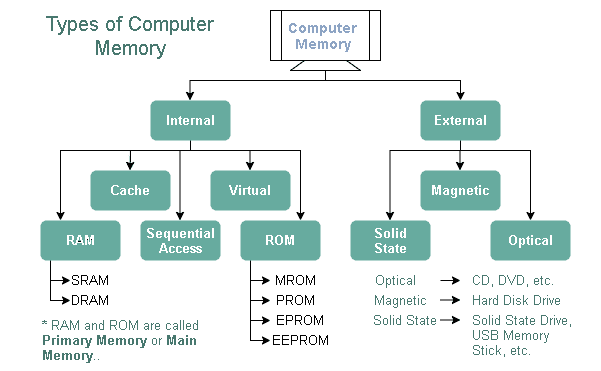 If these are your main workloads, we recommend prioritizing system stability rather than chasing marginal gains.
If these are your main workloads, we recommend prioritizing system stability rather than chasing marginal gains.
Frequently Asked Questions (FAQ)
What does the CL mean in RAM Memory?
CL means “CAS Latency”. The CAS Latency of RAM indicates the number of cycles it takes to get a response from memory once the memory controller sends over a column it needs to access.
Is Mixing RAM with Different Latency, a Bad Idea?
Yes. As we’ve covered here, mixing memory, in general, isn’t ideal. This holds true even if your memory timings are different.
As for what behavior to expect, there are two possibilities:
- if you’re lucky, the memory modules can be tuned to work at the slower memory’s timings.
- if unlucky, you might not see stability until you dial back your memory overclock all the way back to JEDEC specifications, which are usually much slower.
How to Check my RAM’s CAS Latency?
You can find your current memory latency in no time!
First, download CPU-Z from the official CPUID website.
Once you install and run CPU-Z, you should see a screen like this one (the hardware and specs will be yours instead, of course) –
Head on over to the ‘Memory’ tab you see here, and you should see a list featuring your memory frequency (NOT datarate) as well as your memory timings like CAS Latency.
What is SPD in CPU-Z?
If you’re a curious kitty, you’ll have seen a tab called ‘SPD’ in your CPU-Z window and wondered what it was.
SPD, or Serial Presence Detect, is a standardized EEPROM (Electrically Erasable Programmable Read Only Memory) that offers a way for your system to access memory specifications.
So, when your system ‘POSTs’ (Power-On-Self-Test), it accesses memory specifications using the information stored here. During this step, it’ll instantly know what JEDEC specifications are set for your memory, in addition to a few other things. What’s more, it’ll also see any XMP profiles that have been loaded to your memory as you can see in the screenshot above. Your BIOS can then offer a ‘one-click’ way to set specifications to this XMP profile by reading off it.
Your BIOS can then offer a ‘one-click’ way to set specifications to this XMP profile by reading off it.
Keep in mind, these aren’t your current memory settings. This tab only lists what it reads from your memory modules.
Over to You
So, what memory did you end up picking for your workstation? Do tell us in the comments down below or our forum and let us know how your experience has been working on the machine!
CGDirector is Reader-supported. When you buy through our links, we may earn an affiliate commission.
Choosing Your RAM: What is CAS Latency and When Does it Matter?
Choosing RAM can be daunting, because this decision may have a tangible impact on your user experience. How many browser tabs can you keep open, how many layers can you have open in Photoshop, and how fast will your game load? All of this is directly affected by your choice of RAM.
How does RAM work?
Let us use a busy highway as an analogy. The number of RAM sticks is kind of like the number of lanes on the road: the more sticks of RAM you have, the more lanes you have open, and the more cars the road can hold at a given time.
The number of RAM sticks is kind of like the number of lanes on the road: the more sticks of RAM you have, the more lanes you have open, and the more cars the road can hold at a given time.
The size of your RAM, in this analogy, would be how many cars each lane can hold. And the speed of your RAM is like the speed limit sign posted on the highway.
Therefore, a stick of 8GB RAM with a clock speed of 2666mhz can process 8GB of data at a given time, and 2666mhz is the speed at which the information will be processed.
This is why adding more RAM will not necessarily make your computer faster: you’re adding more lanes to the road and more car capacity, rather than increasing the speed limit. Adding more RAM may be useful for users in certain RAM-hungry situations (heavily tabbed Chrome users, 3D rendering/modeling program users, and recent console—e.g. PS3, Wii U—emulation users), but more RAM is almost never the answer as to why a computer is not running a game at your desired performance level.
How do you determine RAM latency?
This is where CAS comes in. To understand how fast your RAM actually is, you must look at its memory timing. It will be listed alongside the RAM with numbers presented in this format: 15-16-16-35.
The first column represents CAS latency, also known as “Column Access Strobe.” This is the number of clock cycles that pass between when an instruction is given and when the information is made available. If you tell someone to “duck!”, CAS latency would be the delay between when you command them to duck and when the other person reacts.
But CAS does not exist in a vacuum, and must be put into a formula alongside other specifications in order to determine the true latency of your RAM.
To calculate the true latency of your RAM in nanoseconds, use the following formula:
(CAS latency/RAM clock speed) x 2000 = latency in nanoseconds
If you have a CAS of 15 and a clock speed of 2400mhz, this would be your true latency:
(15/2400) x 2000 = 12.
5 nanoseconds
If you have a CAS of 17 and a clock speed of 2666mhz, this would be your true latency:
(17/2666) x 2000 = 12.75 nanoseconds
Thus, higher CAS timings can result in a higher latency even with higher clock speeds. However, that doesn’t explain what happens in a situation where the true latency of two sticks of RAM are tied, despite them having different clock speeds (because the faster-clocked choice has a worse latency). In situations where that kind of tie occurs, the higher speed of RAM takes precedence over which has superior CAS latency. Thus, when comparing a stick of DDR4-3000 RAM with a CAS of 15 and a stick of DDR4-3600 RAM with a CAS of 18 (which would both have a true latency of 10 nanoseconds), the DDR4-3600 should be preferred.
Similarly, the comparison of CAS latency between RAM options of identical clock speeds is where CAS matters most. A stick of DDR4-3600 RAM with a CAS of 15 has a true latency of 8.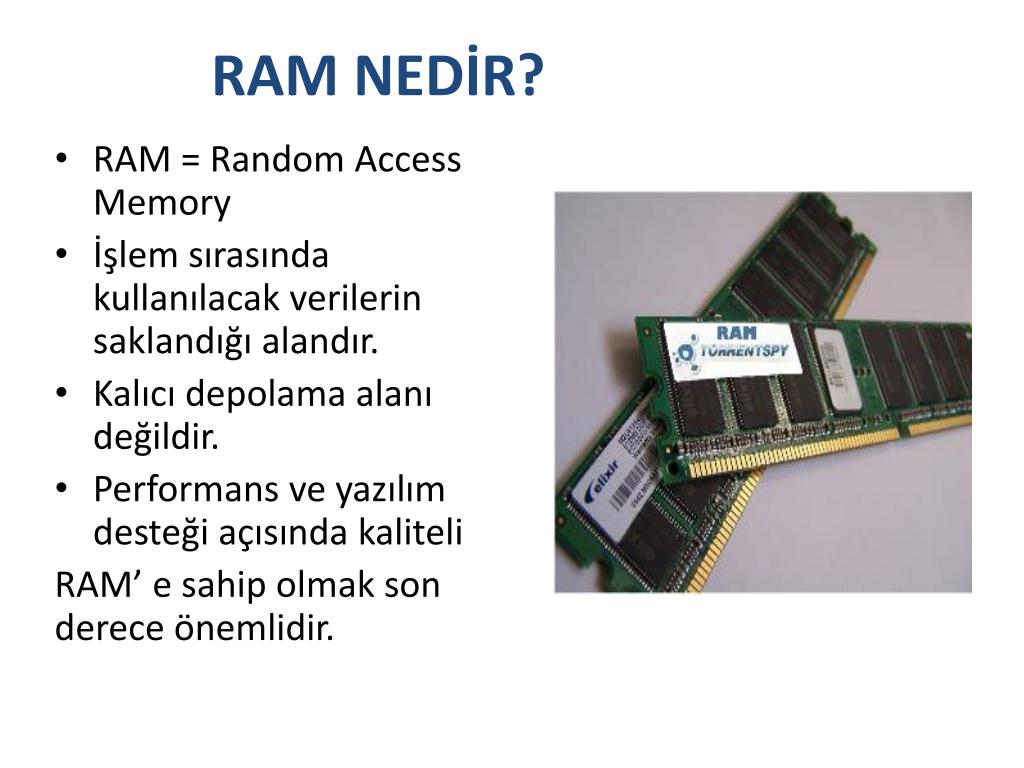 33 nanoseconds, while a same-size/same-speed stick with a CAS of 19 has a latency of 10.56 nanoseconds. In this case, the DDR4-3600 RAM with a CAS of 15 is objectively better than the DDR4-3600 RAM with a CAS of 19.
33 nanoseconds, while a same-size/same-speed stick with a CAS of 19 has a latency of 10.56 nanoseconds. In this case, the DDR4-3600 RAM with a CAS of 15 is objectively better than the DDR4-3600 RAM with a CAS of 19.
How do you choose RAM?
Motherboards and CPUs are rated for the maximum amount and speed of RAM they can handle. If your motherboard and CPU is only rated up to 3600mhz, then you should only purchase or overclock RAM up to 3600mhz. However, a quick perusal will reveal that there’s over a hundred variants of 3600mhz RAM available. If you narrow it down to the size of the RAM, perhaps to 16gb (2 x 8GB), you still have a few dozen options. This is where CAS (and cost) comes in.
For 16GB RAM at 3600mhz, you’ll find options ranging from a CAS latency of 15 to 19. You’ll also find the price has a range of nearly $100 USD difference, and that this difference closely correlates to CAS latency. For example, the G.Skill Ripjaws V DDR4-3600 with a CAS of 19 costs about $130 USD.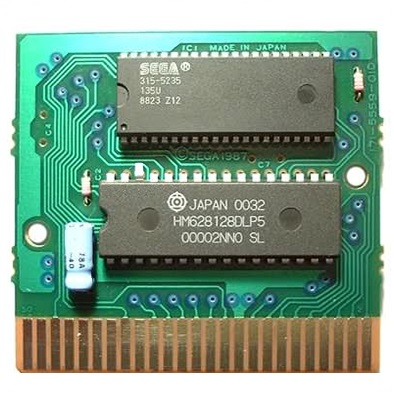 By comparison, the G.Skill TridentZ DDR4-3600 with a CAS of 15 is roughly $230 USD. The lower the CAS, the faster the RAM—and consequently, the more expensive.
By comparison, the G.Skill TridentZ DDR4-3600 with a CAS of 15 is roughly $230 USD. The lower the CAS, the faster the RAM—and consequently, the more expensive.
When deciding between RAM of different clock speeds, the RAM with the higher clock speed is superior; but when choosing between RAM of identical clock speeds, the RAM with lower CAS latency is faster. This is where the constraints of your budget must do battle with your desire for speed (as well as any aesthetic considerations such as RGB lighting).
When dealing in nanoseconds, the difference may not seem significant—and it can certainly be argued that, for the average user, the difference between a CAS of 15 and a CAS of 19 is not worth breaking the bank. But when choosing between RAM options within budget, you should choose the lowest CAS at a given speed for the best performance.
Yulia Vladimirovna Vasilchuk — Faculty of Law
Yulia Vladimirovna Vasilchuk
Head. Department of Environmental Law and Legal Support of Professional Activities
PhD in Law, Associate Professor
Education — TVGU, specialty «Jurisprudence»
Vasilchuk. [email protected]
[email protected]
”, as well as postgraduate study of TVGU. Since 1997 he has been working at the Faculty of Law of the TV State University. In 2000, she was awarded the degree of candidate of legal sciences by the dissertation council of St. Petersburg University of the Ministry of Internal Affairs in connection with the successful defense of her dissertation on the topic: “Civil procedural features of consideration of collective labor disputes” (supervisor — Doctor of Law, Professor Tumanova L.V.). In 2001, she completed an internship at the Department of Land and Environmental Law, Faculty of Law, Moscow State University. M.V. Lomonosov (head of the internship — Doctor of Law, Professor of the Department of Environmental and Land Law of Moscow State University O.I. Krassov). He is the winner of the Open World competition. In 2004, she trained in the USA under the program «Environmental Protection». In 2006 he was awarded the academic title of Associate Professor. Vasilchuk Yu.V. is the author of the «Clean Coast» project and the winner of the All-Russian competition of social projects.
Vasilchuk Yu.V. takes an active part in social work. In particular, she is the Deputy Chairman of the Public Chamber of the Tver Region of the 4th composition. Vasilchuk Yu.V. — member of the expert council at the Legislative Assembly of the Tver region. Vasilchuk Yu.V. is a member of the commission for coordinating the rule-making activities of the Government of the Tver region, as well as a member of the examination commission of the Tver region for taking a qualification exam for the position of a judge. Vasilchuk Yu.V. is a member of the permanent interdepartmental working group on compliance with environmental legislation established under the Volga Interregional Environmental Prosecutor’s Office; is a member of the Public Council under the Ministry of Natural Resources and Ecology of the Tver Region, and is also an expert of the Public Council of the Ministry for Property and Land Relations of the Tver Region. Vasilchuk Yu.V. is an independent expert of the attestation commission and the conflict resolution commission of the Tver Labor Inspectorate. Vasilchuk Yu.V. is a member of the scientific advisory boards of the Tver Regional Court and the Arbitration Court of the Tver Region. Vasilchuk Yu.V. is a member of the Russian Bar Association
Vasilchuk Yu.V. is a member of the scientific advisory boards of the Tver Regional Court and the Arbitration Court of the Tver Region. Vasilchuk Yu.V. is a member of the Russian Bar Association
Since 2000, she has been the head of the scientific circle of the Department of ES and PPPD «Environmental Bureau», within the framework of which the organization of research activities of students on environmental and legal issues is carried out, other activities are carried out aimed at increasing the level of environmental culture of children and youth.
Vasilchuk Yu.V. manages laboratory of innovative methods of teaching lawyers , within the framework of which the project «Innovative technologies in environmental education of lawyers» is being implemented /
Vasilchuk Yu.V. carries out teaching of the following academic disciplines: direction of training «Jurisprudence» — «Land Law», «Environmental Law».
Specialist in Customs — «Environmental Issues in the Activities of Customs Authorities»
Master’s Program «Judicial Protection of Rights and Legitimate Interests» — «Protection of Environmental Rights of Citizens».
Research interests: land law (provision of land plots for construction; land protection, challenging the cadastral value of land), environmental law (legal regulation in the field of production and consumption waste management, legal framework for environmental education and upbringing)
Awards
Certificate of Honorary Governor of the Tver region
Honorary Certificate of the Legislative Assembly of the Tver region
Gratitude of the Department of Education of the Tver region
Letter of the Committee on Youth Affairs of the Tver Region 9000 rector of TVGU
Memorial sign of the Civic Chamber of the Tver region «For an active life position»
Letters of thanks from the Civic Chamber of the Tver Region
Certificate of Honor from the Association of Lawyers of Russia
Vasilchuk Yu.V. is the author of more than 60 scientific papers, including scientific articles, monographs, comments on current legislation.
LIST
published textbooks and scientific papers
participant in the election of the head of the department
Department of EP and POPD
(Position)
Yulia Vladimirovna Vasilchuk
(full name)
|
No. |
Names of educational publications, scientific papers and patents for inventions and other objects of intellectual property |
Form of educational publications and scientific papers |
Imprint |
Volume |
Contributors |
|
|
1 |
2 |
3 |
4 |
5 |
6 |
|
|
1. |
Provision of land plots for construction: basics of legal regulation (article) |
printed |
Bulletin of TVGU. Series: Pravo.2010. No. 23. S. 104-112. (VAK) https://elibrary.ru/item.asp?id=22805641 |
|
|
|
|
2nd |
Review of the round table on the topic: «Legal issues of efficient use of land resources in the Tver region» (article) |
printed |
Bulletin of TVGU. Series: Law.2011. No. 26. pp. 11–16. (VAK) https://elibrary.ru/item.asp?id=17356229 |
|
Abakumova M.G. |
|
|
3. |
Collection of reports of participants of public hearings on the topic «On the implementation of long-term target programs (DTP)» Forests of the Tver region for 2009-2011 «and» Management of natural resources and environmental protection for 2009-2011 «(article) |
printed |
Civic Chamber of the Tver Region, Commission on Legislation, Interaction with Law Enforcement Agencies, Judicial Law. systems and societies. control over the observance of civil right, Tver. state un-t, Jurid. factor; [res. ed. Yu. V. Vasilchuk]. — Tver: The Seventh Letter, 2011. — 48 p. |
|
|
|
|
4. |
Ecological education of students of higher educational institutions // Problems of the quality of legal education in modern Russia: materials of the Intern. Scientific and practical. |
printed |
Nizhnegorsk state university Nizhny Novgorod, 2011.-p.322-325 |
|
|
|
|
5. |
Overview of the «round table» on the topic: «Ensuring that the interests of society, the state and citizens in the field of nature management and environmental protection are taken into account» (article). |
printed |
Bulletin of TVGU. Series: Law.2012. No. 29. S. 13-28. (VAK) https://elibrary.ru/item.asp?id=177 |
|
|
|
|
6. |
On the issue of land as the basis of life and activity of the peoples living in the respective territory (article). |
printed |
Bulletin of TVGU. Series: Law. 2012. No. 30. .32-42 (VAK) https://elibrary.ru/item.asp?id=17 | 8
|
|
|
|
7. |
Review of the «round table» on the topic: «Transfer of land and land plots from one category to another and changing the type of permitted use of land» (article). |
printed |
Vestnik TVGU Series: Law. 2012. No. 30 S. 116-144 (VAK) https://www.elibrary.ru/item.asp?id=17 7
|
|
|
|
|
8. |
On the issue of private and public interest in land law (article). |
printed |
The rule of law. 2012. No. 1 (9). p.60-70 https://elibrary.ru/item.asp?id=17797826 |
|
|
|
|
9. |
Review of the «round table» on the topic: «Legal measures for the protection of forests» (article). |
printed |
Vestnik TVGU Series: Law. 2013. No. 35. S. 221-244. (VAK) https://elibrary.ru/item.asp?id=21272981 |
|
|
|
|
10. |
Ecological education as one of the factors for increasing the efficiency of the implementation of the right of citizens to a favorable environment (article). |
printed |
Modern law. 2014. No. 7. S. 75-80 (VAK) https://elibrary.ru/item.asp?id=21746590 |
|
|
|
|
11. |
On the issue of acquiring rights to land plots that are in state or municipal ownership by the right holder of an object of construction in progress (article). |
printed |
Vestnik TVGU Series: Pravo.2014. No. 1. pp.103-110. (VAK) https://elibrary.ru/item.asp?id=21595904 |
|
|
|
|
12. |
Review of the round table Issues of implementation of the Law of the Tver Region dated December 7, 2011 No. |
printed |
Vestnik TVGU Series: Pravo.2014. No. 1. S.286-313. (VAK) https://elibrary.ru/item.asp?id=21595924 |
|
|
|
|
13. |
Violation of the rules for handling environmentally hazardous waste: criminal procedural and forensic aspects (article). |
printed |
Vestnik TVGU Series: Pravo.2014. Number 3. pp.81-95 (VAK) https://elibrary.ru/item.asp?id=21970585 |
|
Yakovleva N.G. |
|
|
14. |
Acquisition of rights to land plots by citizens with three or more children: topical issues of law enforcement (article). |
printed |
New Legal Thought, 2014 No. 2 (61) P.60-64. |
|
|
|
|
15. |
Actual problems associated with the recognition of rights to unauthorized buildings (article). |
printed |
Actual problems of protecting socio-economic human rights in Russia, the CIS and the countries of the European Union: materials of the international scientific conference, Volgograd, June 6-7, 2014. Volume 1. Volgograd: VolGMU Publishing House. 2014. S. 333-339 |
|
|
|
|
16. |
Commentary on the Civil Procedure Code of the Russian Federation (item-by-article): Civil Procedure Code, taking into account the latest changes introduced by Federal Law No. 140-FZ / N. A. Antonova, M. G. Abakumova, Yu. V. Vasilchuk [and others]; under total ed. L. V. Tumanova. |
printed |
M.: Prospekt, 2014. — 976 p. – From the content: Section VII. Proceedings related to the execution of court decisions and decisions of other bodies. S.881-934 |
|
Antonova N.A., Abakumova M.G. [and etc.] ; under total ed. Tumanova L.V. — |
|
|
17. |
On the issue of the implementation in the Russian Federation of certain areas of state policy in the field of production and consumption waste management (article). |
printed |
Vestnik TVGU Series: Law. (No. 1811 from the VAK list) https://elibrary.ru/item.asp?id=23324722 |
|
|
|
|
18. |
Provision of land plots for the construction of economic and other facilities: environmental and legal aspect (scientific article) |
printed |
Vestnik TVGU Series: Law. 2015. No. 4 P. 144-154 (No. 1811 from the VAK list) https://www.elibrary.ru/item.asp?id=24182668 |
19.95/0.6 |
|
|
|
19. |
ch. 25 Proceedings in administrative cases on challenging the results of determining the cadastral value (commentary to the CAS RF) |
printed |
Commentary on the Code of Administrative Procedure of the Russian Federation / ed. |
22.5/0.5 |
Aksenova O.V., Aleshukina S.A., Antonova N.A. Aftakhova A.V., Baranov I.V. and others, total 18 people. |
|
|
20. |
Proceedings on challenging the cadastral value (training manual) |
printed |
Fundamentals of civil and administrative proceedings. Textbook, ed. L.V. Tumanova. Tver, 2016 — 335p. S. 274-278 https://www.elibrary.ru/item.asp?id=24950932 |
20.93/0.25 |
Aleshukina S.A., Antonova N.A., Aftakhova A.V., Baranov I.V., Dronova Yu.A. and others, total 23 people |
|
|
21. |
Problems and directions of improving the legal regulation of challenging the determination of the cadastral value of real estate objects (monograph). |
printed |
Modernization of the legislation of modern Russia in the context of various branches of law: problems and judgments. Monograph. Tver: Tver State University, 2016.-176p. pp.132-142 https://www.elibrary.ru/item.asp?id=25725056 |
11.00/0.6 p.l. |
Aleshukina S.A., Antonova N.A., Balazh F.A., Bartkova O.G., Voblikov A.B. and others, total 14 people. |
|
|
22. |
Production and consumption waste management: legislative and law enforcement aspects (monograph) |
printed |
Development of the rule of law in the context of new socio-economic and political realities in Russia. S.48-54 https://www.elibrary.ru/item.asp?id=26135558 |
10.25/0.4 . |
Antonova N.A., Artemiev D.E., Bartkova O.G., Voblikov A.B., Voblikova N.A. and others, total 21 people. |
|
|
23. |
Requirements in the field of environmental protection in urban planning (scientific article) |
printed |
Institutional challenges of modern Russia: economics and law. Monograph. Tver: Tver. state un-t, 2016.-238s. pp. 211-215 https://www.elibrary.ru/item.asp?id=26141004 |
15. |
Alpidovskaya M.L., Antonova N.A., Artemyev A.A., Bartkova O.G., Bugrov V.V., and others, 30 people in total. |
|
|
24. |
On the issue of environmental education and upbringing of youth (scientific article) |
printed |
International part-time scientific and practical conference. Tver: Tver State University, 2016 P. 53-60 https://www.elibrary.ru/item.asp?id=28419185 |
10.5/0.4 . |
Aleshukina S.A., Aminova F.M., Antonova N.A., Aftakhova A.V., Bartkova O.G. and others, total 27 people. |
|
|
25. |
Organizational and legal problems of the transition of the Russian Federation to a system of separate collection of production and consumption waste (scientific article) |
printed |
New legal thought. |
11, 85/0.5 p.l. |
|
|
|
26. |
Review of the scientific-practical conference «Production and consumption waste management in the Tver region: problems of legislative and law enforcement nature» (scientific article) |
|
Vestnik TVGU Series: Law. 2016. No. 1. P. 187-206 (No. 1811 from the VAK list) https://www.elibrary.ru/item.asp?id=25501276 |
18.1/1 p.l. |
|
|
|
27. |
What is enforcement proceedings? (training manual) |
printed |
Civil process in questions and answers: textbook / ed. |
28.5/0.4 |
Aleshukina S.A., Antonova N.A., Baranov I.V., Dronova Yu.A., Gubenko A.N. and others, total 30 people |
|
|
28. |
Section 7. Proceedings in cases related to the execution of judicial acts of arbitration courts (commentary to the Arbitration Procedure Code of the Russian Federation). |
printed |
Commentary on the Arbitration Procedural Code of the Russian Federation / ed. Ed. L.V. Tumanova M., Prospekt, 2016. 688 p. |
21.1/0.6 |
Aleshukina S.A., Antonova N.A., Baranov I.V., Bartkova O.G., Vasiliev V.V. and others, total 17 people |
|
|
29. |
Challenging the results of the cadastral value of land plots and other real estate objects: legal positions of the Constitutional Court of the Russian Federation and the Plenum of the Supreme Court of the Russian Federation on this category of cases (scientific article) |
printed |
Problems of administrative legal proceedings: Intern. scientific and practical. conf. — Tver: Tver. state un-t, 2017. P.34-40 https://www.elibrary.ru/item.asp?id=29841221 |
|
Aksenova O.V., Aleshukina S.A. Antonova N.A., Aftakhova A.V., Dronova Yu.A. and others, total 21 people. |
|
|
30. |
Legal basis for environmental education and upbringing (scientific article) |
printed |
Bulletin of TVGU, Series: Law. https://www.elibrary.ru/item.asp?id=28863091 |
16.275/0.9 |
|
|
|
31. |
Review of the scientific and practical conference on the topic: «Specially protected natural areas of the Tver region: problems of a legislative and law enforcement nature» (scientific article) |
printed |
Bulletin of TVGU Series: Law. 2017, No. 3 S.178-185 (No. 1811 from the list of VAK) https://www.elibrary.ru/item.asp?id=30450953 |
18.63/0.5 |
|
|
|
32. |
On the issue of the content and legal significance of the constitutional legal norm on land as the basis of life and activity of the peoples living in the respective territory (scientific article) |
printed |
Collection The Constitution of the Russian Federation and Modern Problems of the Development of Society and the State: Proceedings of the All-Russian Scientific and Practical Conference Dedicated to the 25th Anniversary of the Constitution of the Russian Federation. https://www.elibrary.ru/item.asp?id=36963622 |
11.31/1 |
Aleshukina S.A., Antonova N.A., Aftakhova A.V., Vilova M.G., Dronova Yu.A. and others only 19 people. |
|
|
33. |
The concept and features of judicial protection of the right of citizens to a favorable environment (taking into account the practice of the Volga environmental prosecutor’s office) (scientific article) |
printed |
Bulletin of TVGU. Series: Law. 2018. No. 1. P. 169-181 (No. 1811 from the VAK list) https://www.elibrary.ru/item.asp?id=32672463 |
12. |
Makushenko I.A. |
|
|
34. |
On the issue of the implementation and monitoring of law enforcement in the Tver region of the law of the Tver region dated December 7, 2011 No. 75-ZO «On the free provision of land plots in the territory of the Tver region to citizens with three or more children» (scientific article) |
printed |
Bulletin of TVGU. Series: Law.2018 No. 2. P. 119-126 (No. 1811 from the list of VAK) https://www.elibrary.ru/item.asp?id=35246956 |
13.73/1, 1. |
|
|
|
35. |
Features of consideration of administrative cases on contesting the results of determining the cadastral value of real estate (scientific article) |
printed |
Bulletin of TVGU. https://www.elibrary.ru/item.asp?id=37187474 |
16.18/1.18 |
|
|
|
36. |
Grounds for the forced termination of the right of ownership to land plots from the composition of agricultural land ( scientific article) |
printed |
Bulletin of TVGU. Series: Law.2019. No. 4(60). pp. 103-111. (No. 1811 from the VAK list) https://www.elibrary.ru/item.asp?id=41575337 |
17.24/0.5 |
|
|
|
37. |
Law-making of the constituent entities of the Russian Federation in the field of nature management and environmental protection |
printed |
Materials of the scientific-practical conference «The main milestones in the development of Tver parliamentarism: history and modernity. |
0.3 |
Baryshev V.V., Kozlova N.N., Tsurkan M.V., Kruss V.I., Antonova N.A. |
|
|
38. |
Features of administrative proceedings contesting the results of the determination of the cadastral cost (tutorial) |
printed |
Administrative proceedings in questions and answers Textbook under the general. ed. A.A. Muravieva. M.: Prospekt, 2020. 480s. Question 122 S. 273-283 https://www.elibrary.ru/item.asp?id=42474597 |
30.0/0.6 |
Aleshukina S.A., Aftakhova A.V., Burashnikova N.A., Dronova Yu. |
|
|
39. |
Materials of faculty scientific readings. Professor R.E. Ghukasyan «Protection of the rights and legally protected interests of citizens» |
printed |
Implementation of the right of citizens to a favorable environment: questions of theory and practice of application. Tver: Tver. state un-t, 2020. P.41-51 https://www.elibrary.ru/item.asp?id=44124346 |
|
|
|
|
40. |
Division of land plots and other real estate objects jointly owned by spouses: questions of theory and practice |
printed |
Proceedings of the international round table «Family Law»: modern problems of theory and practice. |
|
Zhukova O.V. |
moins de 12 mois
Premium
Historique
Favoris
Publicite
Telecharger pour Windows Gratuit
Telechargez notre application gratuite
Publicite
Publicite
Aucune publicité
avec Premium
francais
arabe
allemand
anglais
espagnol
francais
hebreu
Italian
japonais
neerlandais
polonais
portugais
roumain
Russian
suedois
turc
Ukrainian
chinois
Russian
Synonyms
arabe
allemand
anglais
espagnol
francais
hebreu
Italian
japonais
neerlandais
polonais
portugais
roumain
Russian
suedois
turc
Ukrainian
chinois
Ukraine
Suggestions:
moins de 18 mois
Ces exemples peuvent contenir des mots vulgaires lies à votre recherche
Ces exemples peuvent contenir des mots familiers liees à votre recherche
moins de
less
less
younger
under
smaller
mois
month
six months
monthly
of the year
flow
En moins de 12 mois , nous sommes passés des mots à l’action.![]()
In less than 12 months, we have turned these thoughts into reality.
Opération sous couverture, une après l’autre, aucune moins de 12 mois .
Deep cover operations, one after the other, no less than 12 months .
Les femmes enceintes ou élevant des enfants âgés de moins de 12 mois ne sont pas concernées par la politique de reduction des effectifs.
For pregnant women or mothers with children under the age of 12 months , the downsizing policy does not apply.
Pour ceux qui sont restés moins de 12 mois en Jordanie, le Comité déterminera au cas par cas s’ils ont pleinement et effectivement eu la possibilité de soumettre des réclamations.
If these claimants remained in Jordan for less than 12 months , the Panel will decide on a case-by-case basis whether they had a full and realistic opportunity to file their claims.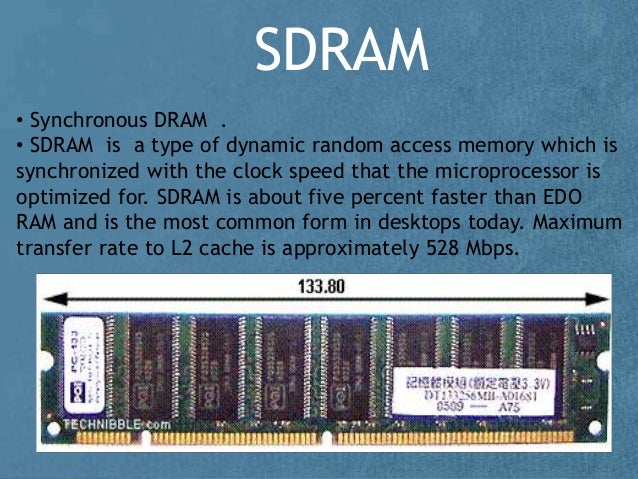
Dans moins de 12 mois , des chefs d’État et de gouvernement se réuniront dans cette salle de l’Assemblée pour examiner les progrès accomplis dans la réalisation des objectifs de développement ambitieux énoncés à la suite du Sommet du Millénaire, il y a quatre ans.
In less than in 12 months Heads of State and Government will gather in this Hall to assess progress towards the lofty development goals set at the Millennium Summit four years ago.
Le taux de mortalité des enfants âgés de moins de 12 mois a été divisé par trois entre 1993 et 2003.
During the period from 1993 to 2003, the mortality of children under the age of one year decreased three times.
Il s’agit-là de fonctions dont l’ONU s’acquittait seule il y a moins de 12 mois .
These are functions that the United Nations performed on its own less than a year ago .
La durée du congé de maternité est calculée au prorata pour les salariées ayant moins de 12 mois d’ancienneté.
For employees with work experience less than 12 months leave is proportionally reduced.
Les femmes enceintes, qui sont en congé pour une raison liée à la grossesse et qui élèvent des enfants âgés de moins de 12 mois ne font pas l’objet de sanctions disciplinaires liées à l’emploi.
Pregnant women, women on maternity leave, and women with children under the age of 12 months shall not be subject to disciplinary action in the form of community service.
Nous avons signé plus de 15 traités et protocoles la semaine dernière, durant la cérémonie de signature des traités, et également ratifié, moins de 12 mois après l’avoir signé, le statut de Rome de la Cour pénale internationale.
We signed more than 15 treaties and protocols last week during a treaty signing ceremony and ratified the Rome Statute of the International Criminal Court after 12 months from the date of its signing.
L’employeur ne demande pas de faire des heures supplémentaires, ni de travailler la nuit lors du repos hebdomadaire aux femmes enceintes et aux femmes ayant un enfant de moins de 12 mois .»
The employer does not use a pregnant employee or an employee who has a child under under 12 months of age , at work on the night shift or the evening shift on weekends.»
3 AGNEAU — jeune ovin de moins de 12 mois ou non encore pourvu d’incisives de seconde dentition en contact
3 LAMB — a young ram under 12 months old or a young ram without a single permanent incisor
4A.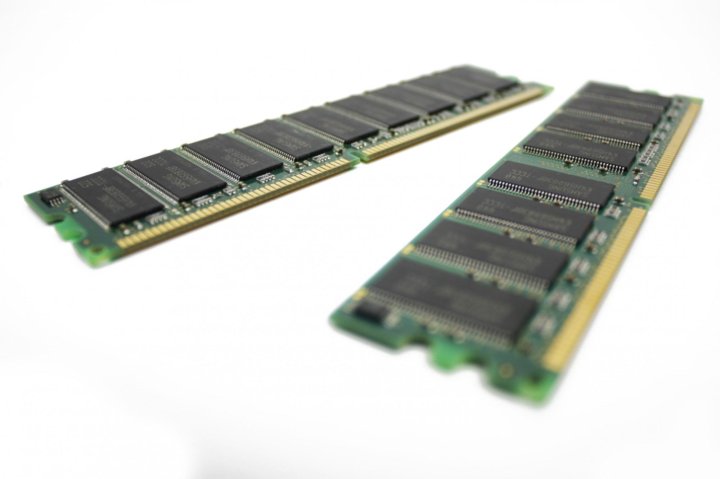 .4.3.1 — remplacer AGNEAU BLANC par «AGNEAU DE LAIT — jeune ovin de moins de 12 mois ou non encore pourvu d’incisives de seconde dentition qui a été nourri principalement au lait ou avec un succédané de lait.»
.4.3.1 — remplacer AGNEAU BLANC par «AGNEAU DE LAIT — jeune ovin de moins de 12 mois ou non encore pourvu d’incisives de seconde dentition qui a été nourri principalement au lait ou avec un succédané de lait.»
4A..4.3.1 — replace the category «YOUNG LAMB», insert the category «LAMB — young sheep up to 12 months of age or young sheep without any permanent incisors, whose diet consisted mainly of milk or milk substitutes»
Plus de results
Le congé de maternité est de 365 jours et toute femme ayant acquitté au moins 12 mois de cotisations sociales peut en bénéficier.
The leave gives the right not to work for 365 days and can be used by any woman who has paid social security contributions under for at least 12 months .
Les femmes enceintes n’ont droit aux prestations de sécurité sociale pendant leur congé de maternité que si elles peuvent justifier d’au moins 12 mois de cotisations.
In the event that a pregnant woman already has at least one children, then the prenatal period is 60 days.
Les pièges à sédiments devraient être installés pendant au moins 12 mois avec des collectes mensuelles d’échantillons afin d’examiner le flux saisonnier.
Rainfall collection devices must be installed at for at least a 12-month period with monthly sampling to study seasonal flow.
Toutes les personnes assurées depuis au moins 12 mois y ont droit, si elles peuvent apporter la preuve qu’elles sont sans emploi.
All persons who have been insured for at least 12 months are eligible for these benefits if they can prove that they are unemployed.
Y sont également soustraites les familles monoparentales qui reçoivent de l’aide depuis au moins 12 mois et qui veulent partager un logement.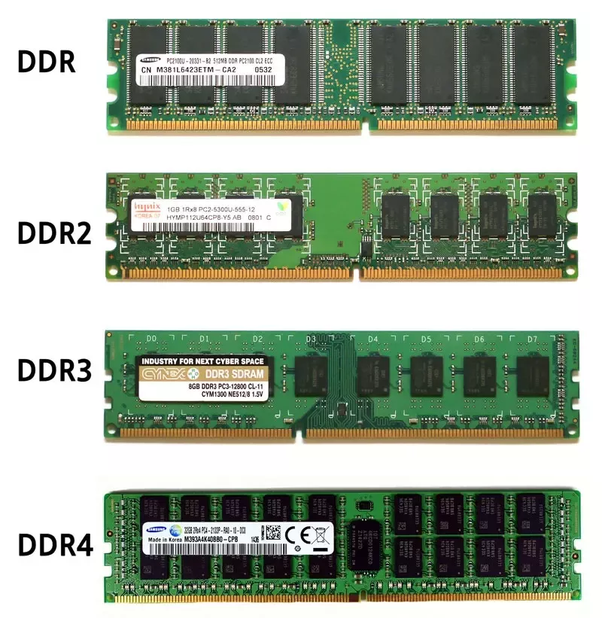
It also does not apply to single parent families who receive assistance for at least 12 months and whose members wish to continue living together.
Au paragraph 12 de sa résolution 58/298, l’Assemblée générale a prié le Secrétaire général de lui soumettre des explications sur les postes vacants depuis au moins 12 mois au 30 juin d’une année donnée.
In paragraph 12 of its resolution 58/298, the General Assembly requested information on posts that have remained vacant for at least 12 months by 30 June of the relevant year .
Le Code du travail oblige les employeurs à accorder 12 semaines de congé de maternité, dont quatre sont des congés payés, aux salariées justifiant d’au moins 12 mois d’ancienneté.
The Labor Law provides that after 12 months work 12 weeks of mandatory maternity leave per year, with four weeks of paid leave.
Contenu potentiellement inapproprié
Les exemples vous aident à traduire le mot ou l’expression cherchés dans des contextes variés. Ils ne sont ni selectionnés ni validés par nous et peuvent contenir des mots ou des idées inappropriés. Signalez des exemples à modifier ou à retirer. Les traductions vulgaires ou familières sont generalement marquees de rouge ou d’orange.
Enregistez vous pour voir plus d’exemples
c’est facile et gratuit
S’inscrire
connection
Aucun result pour cette recherche.
Plus de fonctionnalités avec l’app gratuite
Traduction de voix , fonctionnalités offline , synonymes , conjugaison , jeux éducatifs
Résultats: 17611. Exacts: 13. Temps écoulé: 295 ms.
Exacts: 13. Temps écoulé: 295 ms.
Documents
Solutions enterprise
conjugaison
Synonyms
Correcteur
Aide & A propos de Reverso
Mots fréquents: 1-300, 301-600, 601-900
Expressions courtes fréquentes: 1-400, 401-800, 801-1200
Expressions longues fréquentes: 1-400, 401-800, 800
BSU Electronic Library: Browsing DSpace
Browsing «Vestnik BGU» : scientific and theoretical journal of the Belarusian State University» by Title
Jump to:
0-9
A
B
C
D
E
F
G
H
I
J
K
L
M
N
O
P
Q
R
S
T
U
V
W
X
Y
Z
A
B
AT
G
D
E
AND
Z
And
Y
To
L
M
H
O
P
R
FROM
T
At
F
X
C
H
W
SCH
Kommersant
S
b
E
YU
I
or enter first few letters:
Sort by:
titleissue datesubmit dateIn order:
AscendingDescendingResults/Page
51015202530354045505560657075808500Authors/Record:
All15101520253035404550
Showing results 16 to 65 of 10242
< previous next>
| Preview | Issue Date | Title | Author(s) | ||
|---|---|---|---|---|---|
| 1998 | CAS-97 — starting point | ||||
| SEP-2008 | D-optimal experimentation plans, Robate regarding changes in observation dispersion, for the regression line | Kirlitsa, V.P. | Development and application of a corpus of virtual texts in MM-system | Sovpel, I. V. | |
| 2016 | Development of Interactive Teaching Materials for Computer Mechanics | Taranchuk, V. B.; Zhuravkov, M.A. Vasilkov, Uladzimir Uladzimiravich | |||
| May-2005 | E-asymptotic equivalence of linear differential systems to systems with infinitely differentiable coefficients | Mazanik, Sergey Alekseevich; Krasovskaya, Tatyana Gennadievna | |||
| 2016 | Electrophoretic Deposition of Hydrophobic1 CdSe Quantum Dots, Nanorods and Nanoplatelets from Their Colloidal Solutions in Nitrobenzene 0
6 Ronishenko , B. |
||||
| Mar-2011 | Factor influencing trade show performance for spanish art and collecting sector | Blanco-Gonzalez, Alicia; Diez Martin, Francisco; Prado Roman, Camilo | |||
| 2014 | Festuca arientina Klok. — A new species for the flora of Belarus | Novokhrost, VG; Shlykov, Ye.V. Blishch, N. L. | |||
| 2014 | Kohler, G.-B.; Navumenka, P. I. | ||||
| Feb-2009 | IV International Scientific Conference «Modern problems of landscape science and geoecology» | Vitchenko, A. N.; Shchastnaya, I. I. N.; Shchastnaya, I. I. |
|||
| Oct-2011 | IV International Scientific Conference “Lake Ecosystems: Biological Processes, Anthropogenic Transformation, Water Quality” | Mikheeva, T. M.; Ostapenya, A. P. | |||
| AUG-2009 | IV International Scientific Conference “Russian Language and Functioning” | Dolbik, E. E. | |||
| 200186 200186 200186 200186 200186 200186 200186 in Quantum Electronics | E. D. Karikh; Manak, I.S.0137 | ||||
| 2004 | NO-induced platelet disaggregation and decrease in intracellular concentration of calcium ions | Shamova, Ekaterina Vyacheslavovna; Samal, Alexandra Borisovna | |||
| 1986 | NP Problem of the implementation of hypergrafs with graphs with the degrees of the peaks Levin, A. G. G. | 0019 On the pseudo-stability of semidynamical systems | Kalitine, B. S. | ||
| 2014 | Kalitine, P. B. | ||||
| SEP-2010 | P-Addic algorithm of polynomial factorization with integer coefficients | Gemini, I. A. | P-ad of the conductor and the convergence of the multidimensional row Fourier for continuous and summarized functions | Zarnok, M. A. | |
| 1986 | PD-PT-AI2O3-Catalizer for Terround | Malchenko, S. N.; Baran, S. V.; Branitsky, G. A.; Mychko, D. I.; Achasova, T. A. N.; Baran, S. V.; Branitsky, G. A.; Mychko, D. I.; Achasova, T. A. |
|||
| 2015 | 2185
| 2016 |
Roman Citizenship and Egypt under the Ulio – Claudian Dynasty |
Malashanka, V. S. |
| |
| 2016 | Salt Domes of the Pripyat Trough as Heat Accumulators | Zui , V. I.; Dubanevich, M.A.; Vasilionak , E. A. | |||
| 2016 | Statistical Forecasting of Time Series: Optimality and Robustness | Kharin, Yu. S. | |||
| Jul-2012 | TACIT vs EXPLICIT: why do manufacturers collude? | Tarasov, Vladimir Ivanovich; Dragun, Nikolai Petrovich; Ivanovskaya, Irina Viktorovna | |||
| 2015 | The general solutions of sparse systems with rectangular matrices in the problem of sensors optimal location in the nodes of a generalized graph | Pilipchuk, L.
|



 Conf., N.Novgororod, November 25, 2011 (article).
Conf., N.Novgororod, November 25, 2011 (article).



 75-FZ-ZO “On the free provision of land plots to citizens with three or more children on the territory of the Tver Region (article).
75-FZ-ZO “On the free provision of land plots to citizens with three or more children on the territory of the Tver Region (article).


 2015. No. 2. P.194-207
2015. No. 2. P.194-207
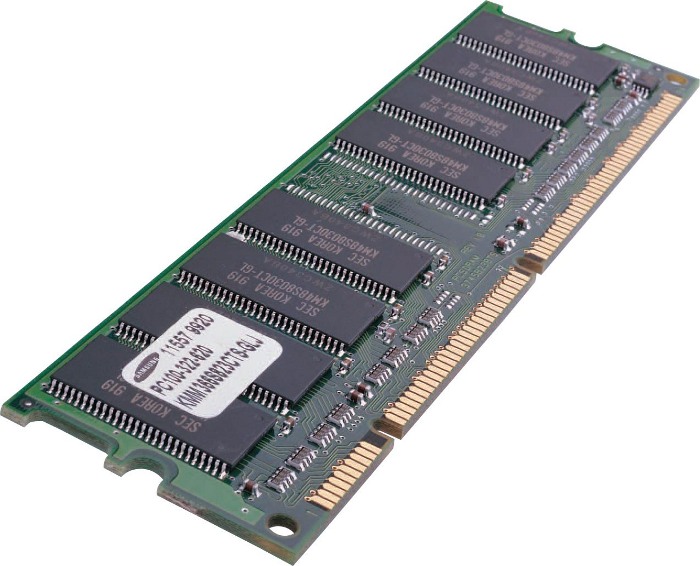
 Monograph. Tver: Tver. state un-t, 2016.-164p.
Monograph. Tver: Tver. state un-t, 2016.-164p.
 0/0.2
0/0.2
 2016. No. 2 (65). pp.108-116
2016. No. 2 (65). pp.108-116
 L.V. Tumanova — M. : Prospect, 2016. — 456 p. pp. 443-449
L.V. Tumanova — M. : Prospect, 2016. — 456 p. pp. 443-449

 2017. No. 1. P. 145-159(No. 1811 from the VAK list)
2017. No. 1. P. 145-159(No. 1811 from the VAK list)
 Tver, Tver State University 2018. S. 30-46
Tver, Tver State University 2018. S. 30-46
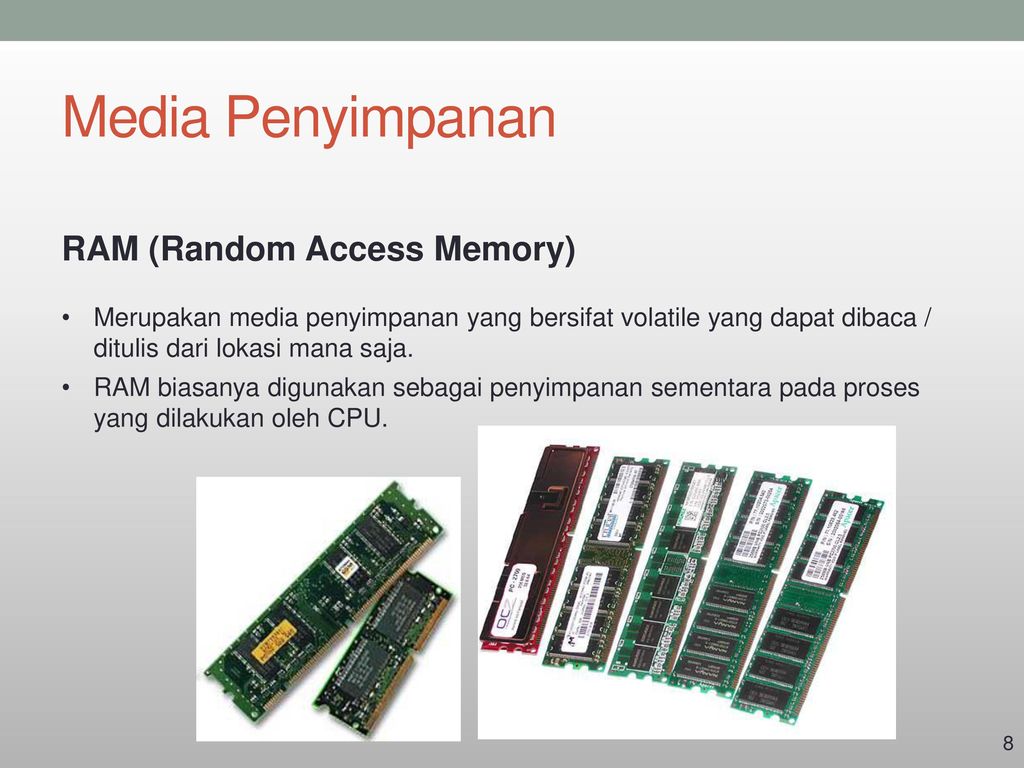 93/0.7
93/0.7
 Series: Law.2019. No. 1 (57). .74-92 (No. 1811 from the list of VAK)
Series: Law.2019. No. 1 (57). .74-92 (No. 1811 from the list of VAK)
 » Tver, 2019.
» Tver, 2019.
 A., Zhukova O.V. and others, 20 people in total.
A., Zhukova O.V. and others, 20 people in total.
 Minsk. October 16-17, 2020
Minsk. October 16-17, 2020
 V.
V.
 V.; Antanovich , A. V.; Prudnikau, A.V.; Fedosyuk, A. A.; Bercu, N. B.; Molinari, M.; Artemyev, M. V.
V.; Antanovich , A. V.; Prudnikau, A.V.; Fedosyuk, A. A.; Bercu, N. B.; Molinari, M.; Artemyev, M. V.